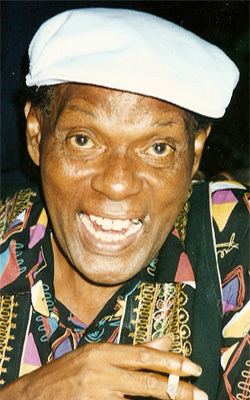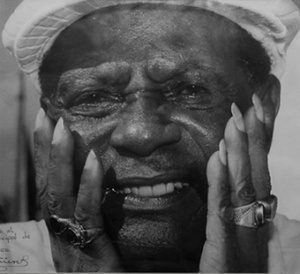Name Tata Guines | Role Composer | |
 | ||
Born June 30, 1930 Guines, HAVANA, Cuba Died February 4, 2008, Havana, Cuba Movies Jane Bunnett: Cuban Odyssey: Spirits of Havana Albums Identity, Tata Guines Best Of Vol. 1, Rumbera Similar People Guillermo Barreto, Chano Pozo, Cachao, Frank Emilio Flynn, Pio Leyva | ||
Tata g ines friends part 1
Tata Güines (June 30, 1930 – February 4, 2008), born Federico Arístides Soto Alejo, was a Cuban percussionist on the tumbadora, or conga drum, as well as a composer. He was important in the first generation of Afro-Cuban jazz.
Contents

Güines was born in Güines, a poor town east of La Habana in the province of Havana in Cuba. He made his first drums out of milk cartons and sausages. By the 1950s he was working with such top Cuban musicians as Arsenio Rodríguez, Luciano "Chano" Pozo, Bebo Valdés and Israel "Cachao" López. In the late 1950s he formed a band with the pianist Frank Emilio Flynn, forming a new band, Quinteto Instrumental de Música Moderna, later known as Los Amigos.
Güines moved to New York City in 1957, playing there with great jazz players such as Dizzy Gillespie, Maynard Ferguson, and Miles Davis at Birdland. As a percussionist, he performed with Josephine Baker and Frank Sinatra. He returned to Cuba in 1959 after Fidel Castro came to power in the Cuban Revolution which he helped fund by contributions from his earnings as a musician.
For a while instrumentalists fell out of favor with the Cuban public and his popularity diminished. He again became popular in 1979 with his work in the Estrellas de Areito sessions, recording for Egrem, the Cuban state record company, which revived the old descarga style. By the 1990s, he was considered an old master and frequently toured. He recorded with the young conguero Anga Díaz, his greatest stylistic progeny, on the 1995 record, "Pasaporte", which won the Egrem album of the year award, the equivalent of a Grammy in Cuba. Again in 2004 he played the congas on the Latin Grammy-winning Lágrimas Negras (Black Tears) with pianist Bebo Valdés and Spanish Flamenco singer Diego El Cigala. He worked with other young bands and recorded "Chamalongo", with the Canadian saxophonist Jane Bunnett, and played on the title track of Bebo Valdés and Diego El Cigala's popular 2003 album, Lágrimas Negras.
Tata Güines was known as the "King of the Congas". He had a musical career that lasted six decades, one that helped popularize Afro-Cuban rhythms.
